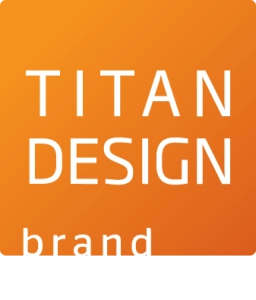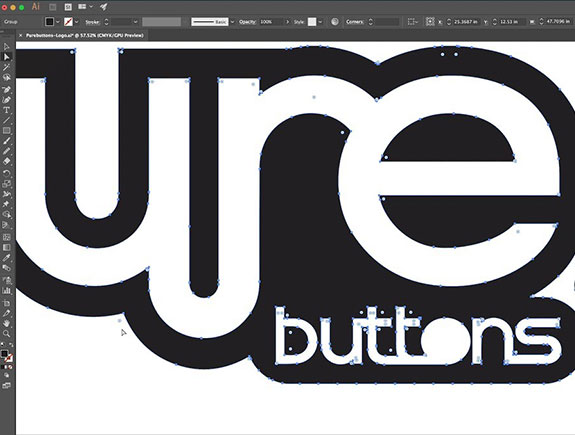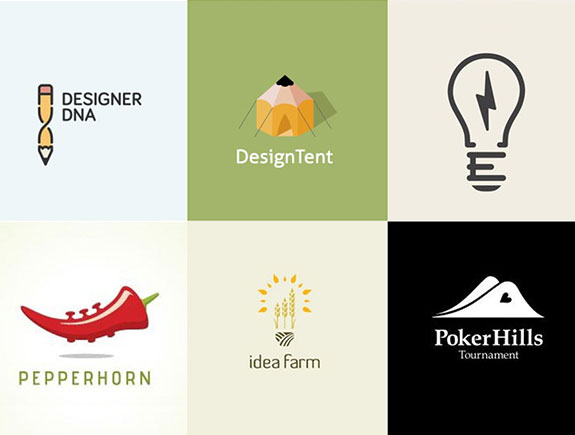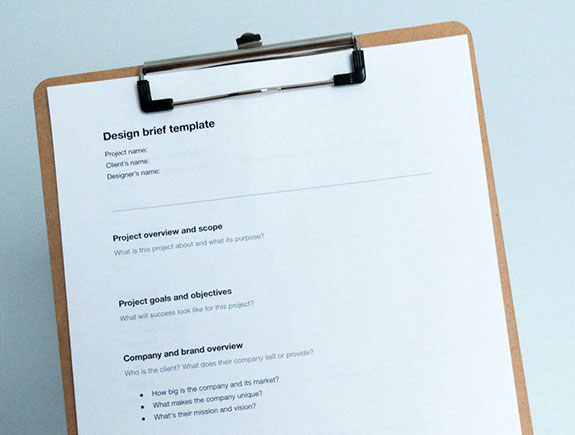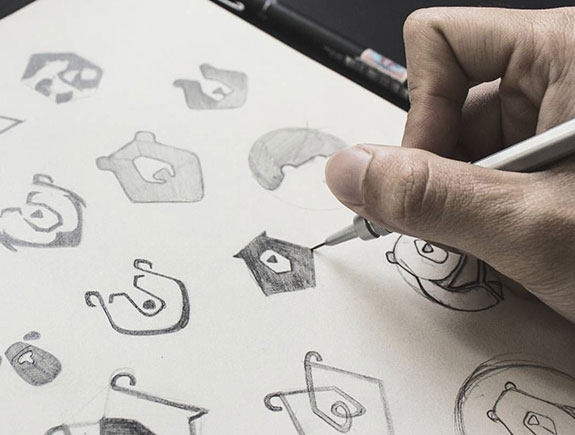Emotions are what we usually focus on when it comes to convincing consumers and targeting. Colors have the strongest impact on consumers’ emotions, even more than images and words. Emotions dictate shaping either positive or negative experiences.
Based on marketing studies, called “neuromarketing”, the chosen color encourage sales, but the effect is even better if the color choice is right.
Top brands, companies, and individuals working in marketing sectors are constantly improving their knowledge about color palettes, and the way they can help with gathering more leads and increasing sales. Color can be important if we connect it with a certain call to action button, text, or even site background.
Theory about colors could be useful for developing a better and different website, the one that will stand out from all similar ones within the same niche, and this way enable you to be better than the competition. This way you will be able to spread the brand message in a more efficient and clear way, to meet the needs of your target audience, and additionally develop the brand itself.
1. Color psychology
When you study color psychology, then you can use that knowledge for increasing the conversion rate. Color palette psychology (selection of certain colors) enables you to predict the reaction of your buyers to marketing messages you send them, based on colors you use for the text on the site, call to action fields, and links.
Psychology studies the human mind, and the way it thinks and makes decisions. It is closely connected with marketing, especially with the part of this science that deals with the internet as it helps us to predict the individual reactions to different messages of the target group, before they take the last step, and make a decision related to the purchase.
Whether you sell clothes, healthy food, or any other service, it is important to fit the color palette with your brand and its marketing plan.
Psychology also teaches us if we want to share a specific brand message, then the face representing a brand has to fit the concept, besides – colors should emphasize something important or convey the general atmosphere.
On the above presented Instagram post for our client Swisslion, we wanted to suggest starting a calm and relaxed morning with Takovo juices. That’s why we used pastel colors in the background. The model in a white T-shirt brought freshness. On the other side, the accent is exactly on the juice and its energetic yellow-orange color.
2. Importance of colors for branding
Colors could be used for communicating brand key values, but also for selling products. When Coca-Cola celebrated 125 years of amazing service and top-notch branding, they used red color as this color represents their brand. How else? Besides all other elements, the red color, the logo, and the label are what make this recognizable.
First impression – We have only one chance to attract the attention of the consumers, and that’s exactly when they step on our website for the first time. It’s the most important moment when the consumer either establishes or breaks the connection with the brand. With the right color choice, you can impress your potential clients and make your recurring client feel well each time they visit the site. The first impression happens only once, and it is hard to forget it.
3. Color psychology as a convincing tool
Colors can provoke reactions of your target audience when it comes to the product offer – whether the consumer will react in a positive or negative way, depends on the reaction to color choice but also on personal preferences. Of course, it is always the best solution to test consumers’ reactions to a certain message and color so we can understand whether it’s the win combination for our brand.
What is the difference in reactions to the colors between women and men? Studies of the sociologist Philip Cohen, from Maryland University in the USA, revealed very interesting data on this topic. Namely, on a simple question: What is your favorite color? 2 000 participants (of the female and male gender) responded it’s the BLUE color. Probably because the blue color evokes a feeling of security and trust. On the other hand, RED color increases the heart rate, encourages aggressive behavior, and creates a feeling of urgency.
What is our reaction to bright colors? Apple was the first one that brought bright colors on the market and colored all its iMac computers into bright colors in 1998.
Apple was the first one who bring bright colors to the computer market and drew a lot of attention from buyers and competition as well. Buyers simply fell in love with these computers. Besides the modern technology, they had a sophisticated design in combination with cheerful colors. We believe this revolutionary approach is still inspiring many.
4. Conversion rate optimization
Taking into consideration the fact less than 5% of people on our planet are not able to register the colors, a theory about the importance of the colors in convincing consumers to buy a certain product should be applicable to websites.
Each element, creating a whole on the website and contributing to an increased number of conversions, should be advanced. Colors are one of these elements, and we’ve already mentioned their role.
The proper color for a homepage – though experts have been discussing for years the importance of the homepage, there are different opinions claiming the homepage is not that important. But the opinion about the key role of the homepage prevailed other opinions. And its look should be appealing to the eye of consumers.
A website should be adjusted to mobile devices, because Google appreciates it especially, titles, call to action fields, links, and other elements must be visible and positioned well.
Call to action colors – if you clearly indicate the action you want your site visitors to take, this will increase the conversions. If the call to action is SHARE or APPLY, it is important to be colored with one of the colors from your palette that attracts attention. Blue or red is always a good choice.
Red color has the power to trigger strong emotions and make consumers take an expected action if this color is in combination with a powerful word like BUY HERE.
Others might think a yellow color is the best solution as it stands out in comparison to all other elements on the website, but it doesn’t evoke the same feeling as red color. Some people tend to define red color as irritating.
The green color is not commonly used for a call to action unless there’s a good reason for that. It is calming, our eyes react well to it and it creates a pleasant and positive call to action.
Remember – there isn’t a color that is the best one for everyone. Your niche is the one that implicates which color is the best one to be used. In some industries, the red color perfectly fits, and it implies an immediate reaction. In other niches that is not the case. For example, if you are selling yoga classes, you want to leave an impression of being calm and relaxed – in this case, the red color doesn’t fit at all to your call to action.
What is the favorite color of Titan designers?
If you want to find out the answer to this question, contact us and book a meeting. Our designers will provide an answer to this and all other questions you might have related to web design, logo design, or other elements of the visual identity.
Feel free to share this text with your colleagues and friends, and read all other posts on our blog page.
Često nam klijenti postavljaju jedno važno pitanje na prvom sastanku, kada se upoznajemo i ugovaramo posao: koliko vremena je potrebno da se uradi jedan logo? To pitanje iako možda deluje kao veoma jednostavno da se na njega odgovori, u svojoj suštini je mnogo više od toga i sadrži u sebi mnogo informacija koje dodatno objašnjavaju taj broj radnih sati za koje je klijent zainteresovan.
Za većinu klijenata, logo je samo jedan grafički element, koji lepo izgleda i koga stavljaju na sve što proizvode. Oni smatraju da je najvažnije da logo izgleda lepo i da se njima dopada. To su, uglavnom, najvažniji kriterijumi koje većina njih ima na početku.
Naravno, ima i onih koji će vrlo jasno i precizno izraziti svoje želje, ideje i potrebe u brifu, govoreći nam šta tačno žele da bude prikazano na njihovom budućem logou. Takvi klijenti vrlo ozbiljno shvataju brendiranje i ne žele da išta prepuste slučaju.
Sa kojom god od ovih dveju grupa da razgovaramo, trudimo se da postavimo mnogo pitanja i saznamo što više o klijentovoj firmi, kako bismo sve to inkorporirali u izgled logoa. Upravo zato što znamo koji je značaj logoa i koliko on može značiti za jedan biznis, ovaj kreativni proces shvatamo vrlo ozbiljno i pristupamo mu strateški.
Logo koji će svi zapamtiti nije lako napraviti i za to je potrebno vreme i mnogo truda. Ukratko, treba proći kroz nekoliko faza kako bi se došlo do finalnog rešenja. U prvoj fazi razgovaramo sa klijentom o vizuelnoj estetici firme, zatim dolazi faza istraživanja i razvoja, nakon koje pravimo prve skice a zatim biramo jedinstveni dizajn i dodatno radimo na detaljima. Crtanje logoa na kompjuteru je samo jedan manji deo procesa, dok istraživanje i razvoj odnose mnogo više vremena.
Kako bismo ovaj izuzetno kompleksan proces učinili što razumljivijim, u nastavku vam predstavljamo faze procesa nastajanja jednog logoa.
1. Brif
Prvi i korak na ovom kreativnom putu se zove dizajnerski brif. To je ona preliminarna faza projekta, kada dizajner i klijent razgovaraju o potrebama, očekivanjima i idejama za logo. Prikupiti što više informacija, u ovoj fazi, je ključno.
Što više pitanja dizajner postavi, to će mu potrebe klijenta biti jasnije i znaće gde će npr. taj logo biti primenjen (na proizvodima, brendiranim materijalima kao što su majice, uniforme, kačketi itd.) Pored toga važno je razgovarati i o detaljima, koji će se naći na logou i koliko će biti detaljan prikaz istog na društvenim mrežama recimo u odnosu na prikaz logoa za bilborde i druge veće formate.
Drugi važan segment razgovora su ciljne grupe i u njemu se dizajner upoznaje sa segmentiranim prikazom kupaca ili korisnika usluga klijenta. Važno je shvatiti kome se obraćamo, kako bi stil izrade logoa odgovarao tome u putpunosti.
I na kraju treba postaviti pitanja u vezi sa vizuelnim identitetom. Da li kompanija već ima određenu šemu boja, da li imaju razvijen vizuelni identitet i da li recimo žele da se korporativne boje koriste i pri izradi logoa. Ponekad kreiranje novog logoa, može značiti i početak kreiranja sasvim novog i svežeg vizuelnog identiteta. U tom slučaju, sva pitanja postaju još važnija jer će odgovori biti korišćeni i kasnije za kreiranje vizuelnog identiteta.
2. Istraživanje
Nakon što su sva pitanja postavljena, došlo se do odgovora i spisak zahteva je sastavljen, prelazimo na fazu istraživanja. Pre nego što povučemo bilo koji potez u programu za kreiranje logoa, važno je da istražimo industriju iz koje klijent dolazi, istorijat te industrije ali i same firme kao i konkurenciju.
Istraživanje konkurencije nam donosi važne podatke o okruženju u kome posluje firma našeg klijenta, kao i to po čemu se ona izdvaja u odnosu na sve ostale iz te oblasti. Jako nam je važno da znamo šta u toj industriji ‘radi’ a šta ne, kako bismo doneli odluku koji stil ćemo izabrati, koliko upečatljive fontove itd. Zbog svega toga posećujemo sajtove klijentove konkurencije, istražujemo koje elemente oni koriste i na koji način.
Istraživanje samo po sebi ne znači ništa, ukoliko dobijene informacije nisu interpretirane na pravi način i ako nisu postavljenje u pravilan kontekst.
Druga vrsta istraživanja koju sprovodimo je vizuelno istraživanje. Njega koristimo kako bismo dobili ideju o stilu, izgledu, pristupu ili stavu koji brend treba da zauzme u odnosu na svoje kupce ili korisnike. Zbog toga pretražujemo logoe iz industrije kojom se klijent bavi, tražimo inspiraciju ali ne kopiramo i ne precrtavamo.
3. Mozganje
Nakon što smo prošli uvodne faze (brif i istraživanje) sada možemo preći na fazu osmišljavanja, razmišljanja i planiranja izgleda budućeg logoa. Prvo je važno popisati sve ključne reči do kojih smo došli u razgovoru sa klijentom i kroz proces istraživanja. Ove reči treba da predstavljaju firmu u punom svetlu i zato su nam važne.
Sledeći korak, u ovoj fazi, je pronalaženje načina da se te reči predstave kroz vizuelizaciju i da se napravi neka vrsta ‘mape inspiracije’, koja će služiti da se fokus održi na najvažnijim elementima i ključnim rečima.
Najvažnije pitanje, koje sebi postavljamo u ovoj fazi, je – da li logo klijenta zahteva prikazivanje kroz simbol, grafički element ili jednostavno tipografsko rešenje imena. Ako je ime firme kratko i pamtljivo, u najvećem broju slučajeva opredelićemo se za upečatljivo tipografsko rešenje, dok ukoliko je ime nešto manje pamtljivo – tada ćemo pre ići na zanimljiv grafički element, koji će podići izgled logoa na viši nivo.
4. Skiciranje
Konačno dolazimo do onog dela, gde će kreativnost doći do izražaja i gde će sve ideje biti prenete iz glave na papir ili direktno na računar. Dok se skicira logo, ključna stvar je naći vezu između ideje i forme u kojoj će logo biti predstavljen.
Neki dizajneri vole da prve skice nekog logoa naprave na papiru, dok se drugi odlučuju da to urade direktno u programima za kreiranje logoa. Naravno, u ovome svemu je najvažniji krajnji ishod a metode za dolazak do njega mogu biti različite ili jednostavno ‘šta kod koga radi’.
Ovo je konačno faza u kojoj umetnost sreće nauku i istraživanje. Sve ono što je dizajner godinama učio i istraživao, skupljao inspiraciju – sada može primeniti na izradu skice, čime logo poprima svoje prve obrise.
Ova faza može oduzeti dosta vremena, jer je kreativna, zahteva puno koncentracije i svaki dizajner će vam reći da se njoj najviše treba posvetiti zato što je u osnovi svega IDEJA. Od nje polazimo i kada dođemo do ideje, koju ćemo dalje razviti, sve je mnogo lakše i dalje faze idu mnogo lakše.
Stigli smo na pola puta i želimo da ovde zastanemo, a o sledećim fazama možete da čitate u narednom blog postu.
Ukoliko vam je ovaj tekst bio koristan, prosledite ga prijateljima i kolegama a ako vam je potreban dizajn logoa, pišite nam.
